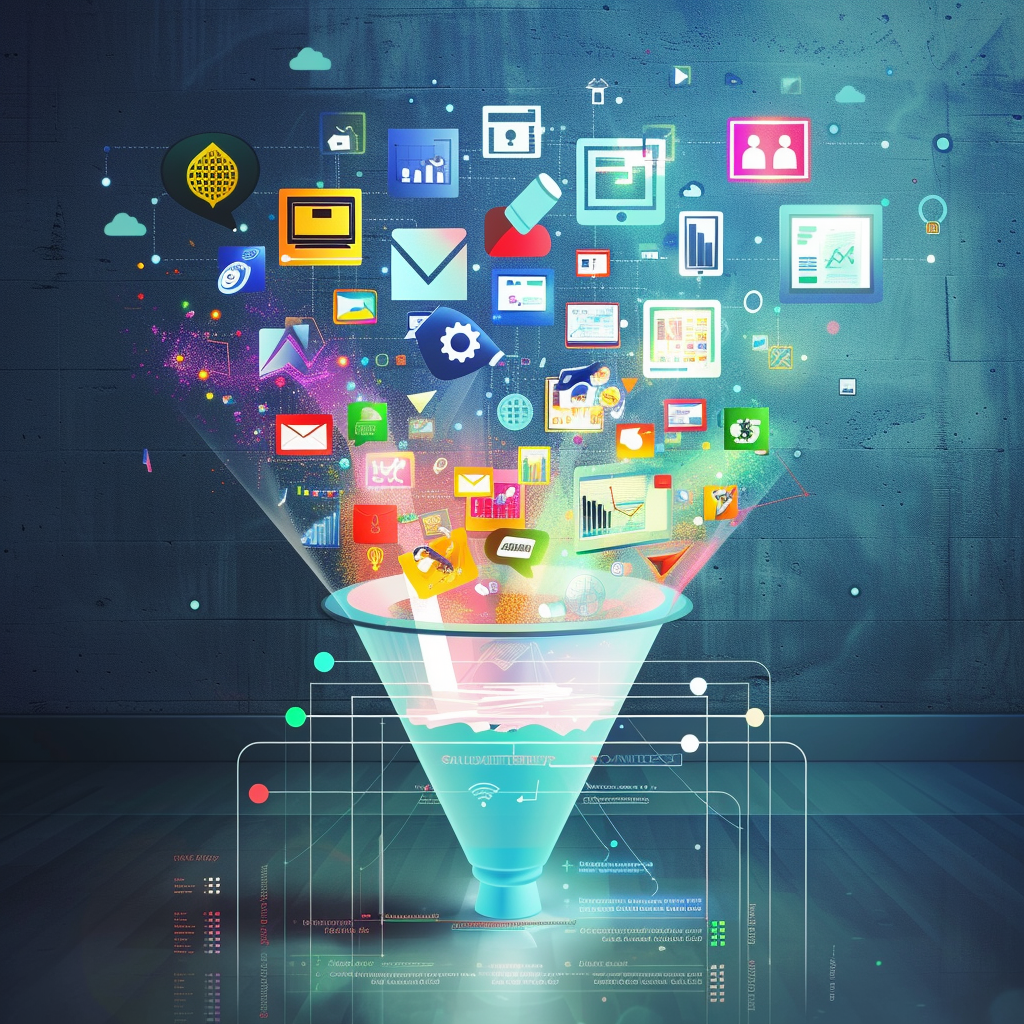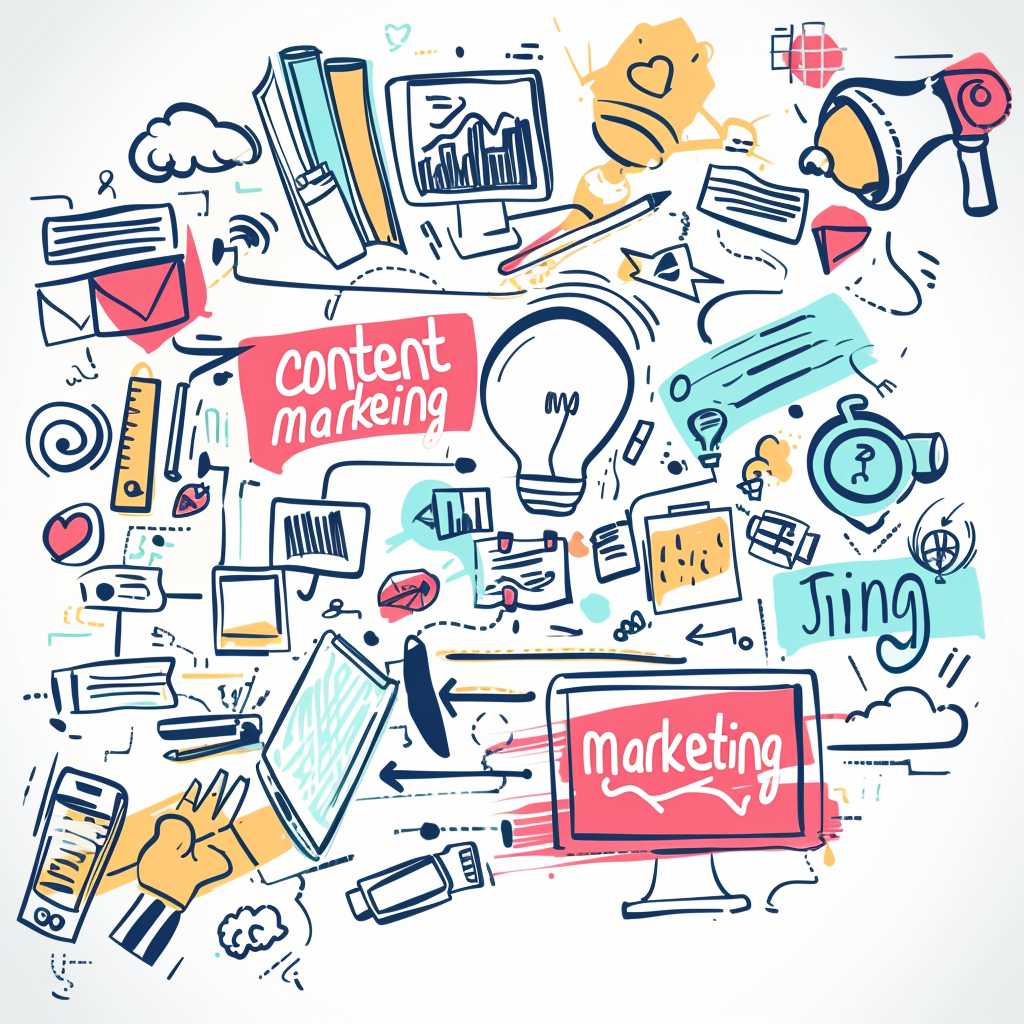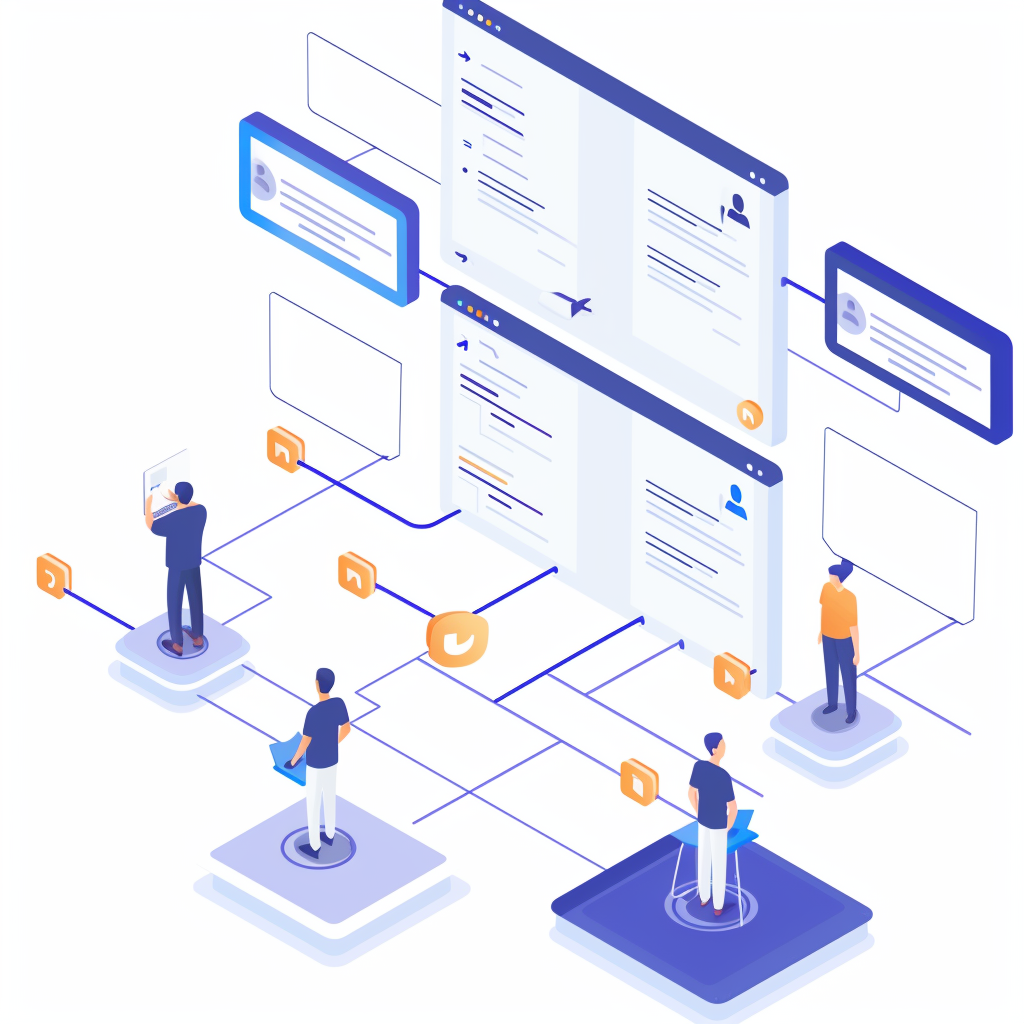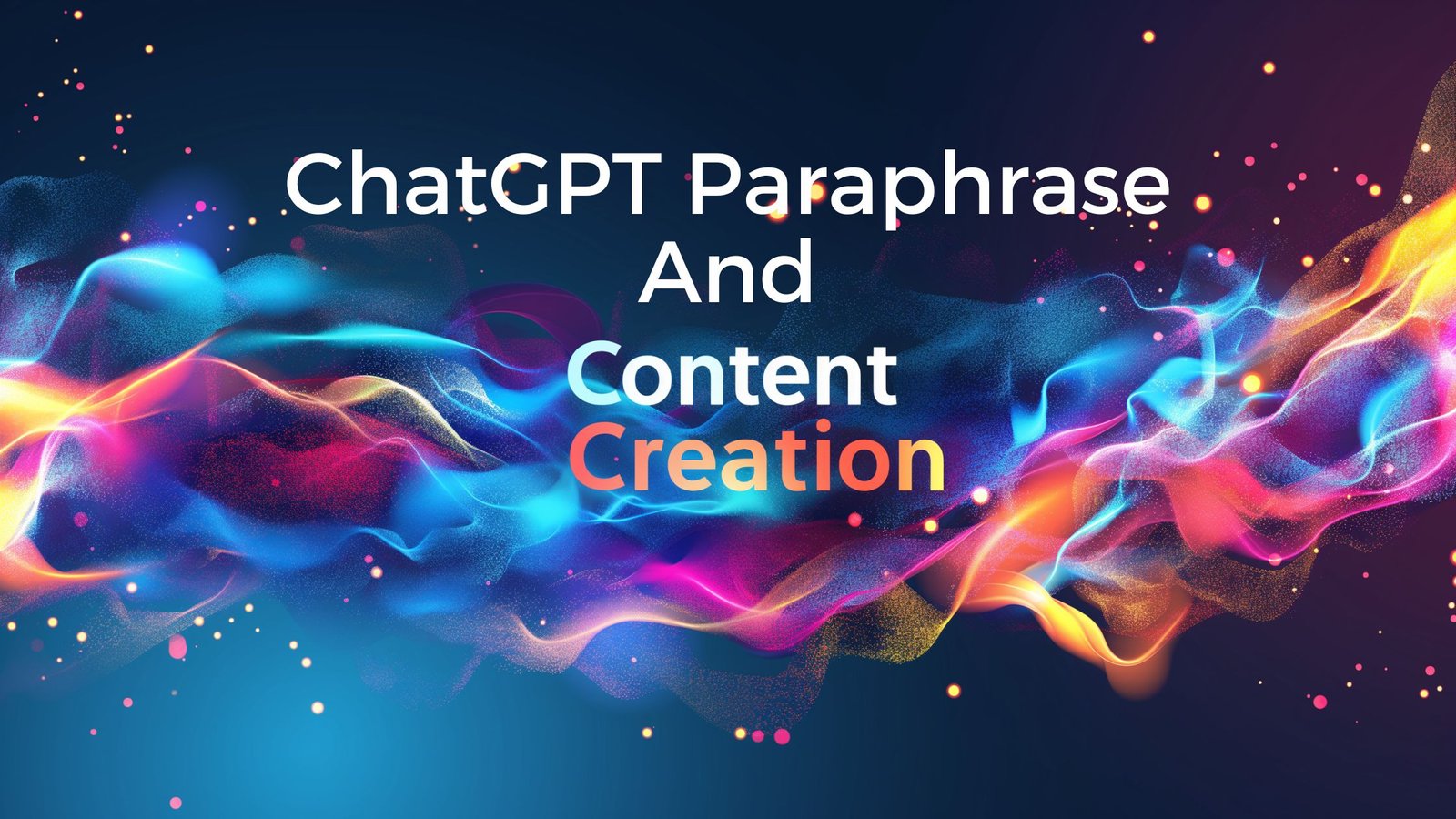Table of Contents
Introduction to ChatGPT Paraphrase: Enhancing Your Content with AI
In the rapidly evolving landscape of digital content creation, consistently producing unique, engaging, and high-quality content is paramount. Enter “ChatGPT Paraphrase,” a groundbreaking AI tool that is revolutionizing how writers, marketers, and content creators approach the task of writing and editing. By leveraging the sophisticated capabilities of ChatGPT for paraphrasing, individuals and organizations can enhance their content’s originality, readability, and SEO performance.

This technology is not just about altering words or sentences; it’s about understanding context, preserving the original message’s intent, and delivering it in a new, refreshed form. Whether rephrasing a blog post to avoid redundancy, rewriting an article to improve clarity, or generating multiple versions of marketing copy to test which performs best, ChatGPT’s paraphrase function offers a versatile solution.
The adoption of ChatGPT paraphrase tools is a testament to the growing reliance on AI in creative processes. It underscores a shift towards more efficient, intelligent content creation methods that can adapt to various needs and styles. As we delve deeper into the capabilities, benefits, and considerations of using ChatGPT for paraphrasing, it becomes clear that this technology is not just a tool but a partner in the creative process.

Disclaimer: this site is sponsored by affiliate programs. We may earn money from the companies mentioned in this post as an Amazon affiliate partner, and we may earn from qualifying purchases.
Through this exploration, we’ll uncover how ChatGPT’s paraphrasing feature significantly impacts content creation workflows, improves SEO strategies, and, ultimately, sets a new standard for quality and innovation in written content. Join us as we navigate the ins and outs of utilizing ChatGPT paraphrase to elevate your content to new heights.
The Mechanics of ChatGPT Paraphrase: How It Works
Understanding the mechanics of how ChatGPT paraphrases text illuminates the fascinating interplay between artificial intelligence and language. At its core, ChatGPT’s paraphrasing capability is a sophisticated process that goes beyond mere word substitution. When tasked to paraphrase or summarize text, ChatGPT undertakes a comprehensive transformation of the input text, employing different words and sentence structures while meticulously preserving the original ideas’ meaning. This involves an intricate dance of changing words, utilizing synonyms, and entirely restructuring blocks of text to present the content in a new, yet fundamentally unchanged, way.

The process symbolizes ChatGPT’s broader capabilities in content creation and refinement. AI writing, including paraphrasing, exhibits traits such as rigid consistency, repetitive phrasing, a lack of imaginative leaps, and a tendency towards generic language. These characteristics stem from the model’s design to follow logical patterns and draw from a vast database of information without the human knack for creativity or nuance. However, this structured approach allows ChatGPT to paraphrase the text efficiently, making it a valuable tool for those looking to refine their writing or convey information in a more precise, more accessible manner.
Despite the benefits, it’s crucial to recognize the limitations inherent in AI-paraphrased text. The accuracy of ChatGPT’s paraphrasing can vary, particularly with newer or highly technical material not fully represented in its training data. This highlights the importance of human oversight in validating and refining AI-generated content to ensure it meets the intended standards of clarity, relevance, and originality.
Disclaimer: This site is sponsored by affiliate programs. We may earn money from the companies mentioned in this post as an Amazon affiliate partner, and we may earn from qualifying purchases.
To optimize the use of ChatGPT for paraphrasing, a strategic approach involving clear, detailed prompts and subsequent human review can significantly enhance the output’s quality. By specifying the desired outcome—a simplified explanation, translation, or content tailored for different channels—users can guide ChatGPT to produce summaries and paraphrases that are informative and engaging. This blend of AI efficiency and human insight ensures that ChatGPT’s paraphrasing tool remains a powerful asset in the content creation toolkit.
Benefits of Using ChatGPT for Paraphrasing in Content Creation
Exploring the “Benefits of Using ChatGPT for Paraphrasing in Content Creation” reveals several vital advantages that cater to content creators’, marketers’, and writers’ needs. ChatGPT’s paraphrasing ability is celebrated for enhancing user experience by producing dynamic, engaging conversations that mirror human-like interactions. This AI capability ensures that responses are not only varied and contextually appropriate but also maintain the core message intended by the user, thus fostering a more natural and engaging communication flow.
Also Read: THE FUTURE OF CONTENT CREATION – 6 TRENDS TO WATCH
One of the standout benefits of employing ChatGPT for paraphrasing in content creation is the significant improvement in content quality. Content creators can leverage ChatGPT’s paraphrasing tools to craft engaging blog posts, articles, and various forms of written content that are fresh, unique, and captivating for the audience. This is achieved through ChatGPT’s deep understanding of language nuances and patterns, which allows for the generation of responses that are accurately tailored to the user’s needs and preferences. Moreover, the ability to paraphrase with ChatGPT aids in avoiding plagiarism, ensuring that the content is original and provides value through unique perspectives.

Furthermore, ChatGPT’s flexibility in adjusting tone and style to match different brand voices and communication styles is crucial for creating content that resonates with a specific audience. Whether the need is for a professional, casual, or informative tone, ChatGPT can paraphrase responses to align with the desired communication style, enhancing the versatility of AI-generated content. This adaptability is particularly beneficial for SEO, as paraphrasing can naturally incorporate relevant keywords and phrases, improving the content’s visibility and ranking on search engines.
In addition to these benefits, the practical applications of ChatGPT’s paraphrasing capabilities extend to business and creative writing, offering tools for brainstorming, expanding on ideas, and generating unique content tailored to specific topics or niches. This can translate to better customer feedback analysis and market research for businesses. At the same time, writers and authors can find value in generating innovative story ideas and developing compelling narratives.

Disclaimer: This site is sponsored by affiliate programs. We may earn money from the companies mentioned in this post as an Amazon affiliate partner, and we may earn from qualifying purchases.
The integration of ChatGPT in content creation strategies presents a powerful tool for enhancing productivity, creativity, and content quality. By leveraging its paraphrasing capabilities, creators can overcome challenges such as writer’s block and repetitive language, ensuring that their content remains engaging, relevant, and tailored to meet the evolving needs of their audience.
ChatGPT Paraphrase vs. Traditional Paraphrasing Tools: A Comparative Analysis
When comparing ChatGPT’s paraphrasing capabilities with traditional paraphrasing tools, several vital differences emerge, highlighting the strengths and limitations of each approach.
Also Read: AI Content Optimization: The Great Revolution for Digital Marketing Strategies
ChatGPT stands out for its ability to produce highly original, natural-sounding text through advanced techniques such as phrase replacement, lexical substitution, and grammatical restructuring. It excels in altering sentence structures and offers vast possibilities for customization, allowing users to specify tone, style, vocabulary, and more. This flexibility makes ChatGPT a powerful tool for generating diverse vocabulary content tailored to specific requirements. However, its interface, primarily designed for chat, can be less convenient for paraphrasing tasks than dedicated tools. Additionally, while it offers extensive customization options, each change requires a new command, making the process more time-consuming if multiple adjustments are needed.

Disclaimer: This site is sponsored by affiliate programs. We may earn money from the companies mentioned in this post as an Amazon affiliate partner, and we may earn from qualifying purchases.
Traditional paraphrasing tools, on the other hand, often have user-friendly interfaces explicitly designed for paraphrasing tasks. Tools like Quillbot and Paraphraser.io provide features such as built-in plagiarism checkers, citation generators, and thesauruses, making it easier for users to achieve desired results with less manual intervention.

They are designed to change not only words but also sentence structures, and they highlight the parts of the text that were altered, offering transparency in the paraphrasing process. Despite these advantages, traditional tools may have limitations such as word count restrictions or the need for advanced features like changing narrative perspectives. Moreover, the quality of the paraphrased text can vary, with some tools producing content that may require manual correction to resolve errors or improve coherence.
In summary, while ChatGPT offers unparalleled flexibility and the ability to produce content that closely mimics human writing, traditional paraphrasing tools like Quillbot and Paraphraser.io offer a more streamlined, user-friendly experience for quick paraphrasing tasks. The choice between them depends on the user’s specific needs, including the level of customization required, the importance of interface ease-of-use, and the need for additional features such as plagiarism checking.
Optimizing Your Writing with ChatGPT Paraphrase: Tips and Tricks
Optimizing your writing with “ChatGPT Paraphrase” involves leveraging the AI’s ability to reformulate text to enhance clarity, originality, and engagement. This process not only aids in avoiding redundancy and enhancing readability but also plays a pivotal role in content creation and refinement. Here are some insights and strategies to effectively utilize ChatGPT for paraphrasing, drawing from various practical applications and expert advice.
1. Enhancing Content Clarity and Engagement: ChatGPT can significantly improve your writing by paraphrasing sentences or sections that might be unclear or cumbersome. You can discover alternative ways to convey your message succinctly and engagingly by inputting your text and requesting a paraphrase. The AI’s capability to rephrase text ensures that the essence of the original message is maintained while possibly making it more accessible and appealing to your audience.

2. Overcoming Writer’s Block: One of the most common challenges writers face is writer’s block, where coming up with fresh ideas or expressions becomes daunting. ChatGPT is a creative partner in such scenarios, providing new perspectives or ways to articulate thoughts. This can be particularly useful when you’re stuck on how to start a section or need a different angle on a topic you’ve covered extensively.
3. Content Summarization: Besides generating new ways to express ideas, ChatGPT is invaluable for summarizing lengthy texts. Whether it’s condensing research findings, articles, or even your drafts, the AI can distill critical points into concise summaries. This feature is handy for creating abstracts, executive summaries, or simplified explanations of complex topics.
4. Adapting Tone and Style: Another influential application of ChatGPT’s paraphrasing capability is adjusting the tone and style of your writing to suit different audiences or platforms. Whether you need a formal tone for academic or professional writing or a more casual and engaging style for social media, ChatGPT can help rephrase your content accordingly. This flexibility allows you to tailor your message effectively across diverse channels.
5. Research and Fact-Checking: While not directly related to paraphrasing, incorporating ChatGPT into your research process can enhance content quality. The AI can assist in verifying facts, summarizing existing knowledge, and suggesting areas for further exploration. However, it’s crucial to approach this cautiously, as the AI’s responses may sometimes need verification for accuracy and relevance.
Tips for Maximizing Effectiveness with ChatGPT Paraphrase:
- Be specific and transparent with your prompts to ensure the paraphrased output aligns closely with your intended message and style.
- Use paraphrasing for creativity and refinement, not just for altering text. It’s about improving content quality, not just changing words.
- Constantly review and edit the AI-generated paraphrases to ensure they meet your standards and accurately convey your intended meaning.
By integrating these strategies, you can harness ChatGPT’s paraphrasing capabilities to refine your writing process, making your content more engaging, versatile, and effective. Remember, the goal is to enhance your writing while retaining your unique voice and perspective.
Integrating ChatGPT Paraphrase into Your Content Workflow
Integrating ChatGPT into your content workflow can significantly enhance your content creation process, making it more efficient and creative. ChatGPT, a conversational AI developed by OpenAI, has transformed how creators approach writing, research, and content structuring. Here’s how you can leverage ChatGPT to streamline and enrich your content workflow, ensuring each piece is insightful, engaging, and reader-friendly.
Understanding ChatGPT’s Capabilities
ChatGPT’s AI model is adept at understanding and generating text based on patterns learned from vast examples. This makes it an invaluable tool for content creators looking to produce various content, from blog posts to detailed reports. By inputting a prompt—a short phrase or sentence that tells the AI what to write about—you set the stage for ChatGPT to generate content tailored to your needs.
Tips for Effective Integration
- Prompt Crafting: The output quality heavily depends on the input prompts. Crafting detailed, specific prompts can significantly improve the relevance and quality of the generated content. This involves being transparent about the topic, style, and key points you want to include.
- Content Structuring: Use ChatGPT to help structure your content effectively. It can assist in brainstorming content outlines or summarizing complex information into digestible formats. This saves time and ensures your content is well-organized and easy to follow.
- Enhancing Creativity: ChatGPT can be a source of inspiration for new content ideas or for overcoming writer’s block. You can discover innovative ways to present information and keep your audience engaged by exploring different prompts and content formats.d
- Editing and Refining: Beyond initial content generation, ChatGPT can assist in editing and refining your drafts. It can help identify grammatical errors, suggest better phrasing, and even ensure your content is concise and to the point.
- SEO Optimization: Integrating ChatGPT into your SEO strategy can enhance your content’s visibility. Use it to generate SEO-friendly titles, headings, and even meta descriptions that align with your target keywords.
To make the most of ChatGPT in your content workflow:

- Start by identifying areas where you need the most support—idea generation, research, drafting, or editing.
- Experiment with different prompts to see how ChatGPT responds and refine your approach based on the results.
- Remember, the goal is to use ChatGPT to augment your creativity and productivity, not to replace the unique insights and expertise you bring to your content.
Incorporating ChatGPT into your content creation process can save time, enhance creativity, and improve content quality. By following these tips and continuously experimenting with how you use ChatGPT, you can create a more efficient, dynamic, and engaging content workflow that resonates with your audience and meets your content goals.
The Impact of ChatGPT Paraphrases on SEO and Web Content
The impact of ChatGPT Paraphrase on SEO and web content is multifaceted, revolutionizing how content creators approach writing and optimization for search engines. AI paraphrasing tools have emerged as powerful allies in the quest for original, engaging content that resonates with readers and search algorithms.
Enhancing Content Quality and Originality: By employing AI paraphrasing tools, content creators can significantly improve the quality and uniqueness of their content. These tools are adept at suggesting alternative vocabulary and sentence structures, which not only enhances the readability of the content but also aids in maintaining originality. This is crucial for standing out in a crowded digital landscape and avoiding the pitfalls of plagiarism, a key concern in content creation.
Boosting SEO through Enhanced User Engagement: One of the primary SEO benefits of using ChatGPT Paraphrase is its ability to refine complex topics into more accessible, reader-friendly formats. This not only aids in explaining difficult concepts with ease but also improves the overall readability of content. High readability is directly linked to better user engagement metrics, such as increased dwell time, reduced bounce rates, and favorable signals to search engines. Content that is easy to understand and engage with improves SEO outcomes.
Related Article: How Is ChatGPT Proofreading Services a Good Option For You?
Addressing Keyword Stuffing and Plagiarism: Keyword stuffing, an outdated and penalized SEO tactic, can inadvertently occur during content creation. AI paraphrasing tools help mitigate this risk by intelligently varying the language used, ensuring that keywords are integrated naturally without compromising the content’s readability or search engine compliance. Additionally, these tools play a crucial role in combating certain types of plagiarism, providing a means to rephrase public domain content or widely known facts uniquely, thus safeguarding against potential SEO penalties associated with duplicate content.
The Double-Edged Sword of AI Paraphrasing: While AI tools offer considerable advantages, their use is not without challenges. It’s imperative to select tools that effectively preserve the original context and tone, avoiding inaccuracies or distortions in meaning. Overreliance on AI for paraphrasing can lead to content that, while unique, may lack the depth or authenticity that comes from human insight.
Therefore, balancing AI assistance with human oversight ensures the content remains accurate, engaging, and authentic to the intended message. In conclusion, ChatGPT Paraphrase represents a significant advancement in content creation and SEO strategy. AI paraphrasing tools can significantly benefit SEO efforts by enhancing the originality and readability of content, improving user engagement metrics, and helping avoid SEO pitfalls like keyword stuffing and plagiarism. However, the key to maximizing their potential is using them judiciously, complementing rather than replacing human creativity and expertise.
Creative Uses of ChatGPT Paraphrase Beyond Basic Rewriting
Exploring the “ChatGPT Paraphrase” realm unveils many creative applications beyond mere text rewriting. One fascinating use is in SEO keyword strategy, where ChatGPT can identify underserved topics within a niche, aiding in the discovery of low-competition keywords with significant search volume. This capability extends to drafting article titles that are both engaging and SEO-friendly, leveraging data from tools like Google Ads Keyword Planner for informed content planning.

Moreover, ChatGPT’s versatility shines in finding quality sources to bolster a website’s SEO, emphasizing the importance of E-E-A-T (Expertise, Authoritativeness, Trustworthiness) in content credibility. By generating queries tailored to specific needs, ChatGPT can unearth .edu and .gov sources, which provide a solid foundation for authoritative articles.
Additionally, ChatGPT enriches content with stats and facts, transforming thin content into comprehensive, SEO-optimized articles. This approach showcases expertise and aligns perfectly with Google’s helpful content guidelines, enhancing the overall quality and relevance of the information presented.
These examples underscore the innovative ways ChatGPT paraphrasing can be leveraged beyond fundamental rewriting, highlighting its potential as a powerful tool in content creation, SEO strategy, and authoritative writing.
Pros and Cons of Relying on ChatGPT for Paraphrase
Given the constraints and focusing on creating a concise, insightful summary while ensuring it’s engaging and easy to read, here’s a bullet-point overview of the “Pros and Cons of Relying on ChatGPT for Paraphrase”:
- Pros:
- Excels in various natural language processing tasks, offering coherent and informative responses.
- Valuable for conversational AI, content generation, and text classification.
- Enhances content creation efficiency, making it a versatile tool across topics.
- Cons:
- It may sometimes provide inaccurate or misleading information.
- Training data biases could lead to biased outputs.
- Less reliance might hinder critical thinking and problem-solving skills.
This overview reflects the nuanced capabilities and limitations of using ChatGPT for paraphrasing, highlighting its role as a powerful tool that requires careful consideration in its application.
The Future of Content Creation with ChatGPT Paraphrase: Trends and Predictions
The future of content creation with ChatGPT paraphrase is poised at a transformative juncture, marked by trends and predictions that signal a substantial shift in how content is conceptualized, developed, and disseminated. The emergence of ChatGPT and other AI tools is catalyzing a renaissance in creative processes, efficiency, and personalization, offering a glimpse into a future where AI’s role is not just supportive but integral.

One of the most compelling advancements is automating time-consuming tasks such as generating blog outlines or campaign schedules, liberating human creativity for more innovative endeavors. This shift is particularly notable in newsrooms and media organizations, where ChatGPT assists journalists and editors in quickly generating news summaries, applying metadata, and automating data analysis and reporting. Such capabilities underscore a broader trend toward efficiency and creativity, with AI tools like Jasper and Midjourney offering insights for SEO optimization and creating AI visual art, further expanding content creators’ imaginative powers.
Integrating mixed realities, including virtual reality (VR) and augmented reality (AR), presents another frontier, revolutionizing user engagement by providing immersive experiences that bridge the gap between digital content and the physical world. Meanwhile, the surge in short-form video popularity, driven by platforms like TikTok, Instagram, and YouTube Shorts, reflects changing consumer habits toward succinct, engaging, and shareable content.
Beyond these technological innovations, the ethos surrounding ChatGPT’s application in content creation speaks to a broader philosophical shift. As noted by content experts, the future of creative activities, including marketing and communications, is indelibly linked to how we harness AI’s potential. The technology is in its nascent stages, and its full impact remains to be seen. However, generative AI technologies like ChatGPT are not merely tools but catalysts for change, challenging us to rethink the creative process and our role.
The potential applications of ChatGPT in scriptwriting, customer service, and education highlight its versatility and the broad spectrum of possibilities it opens up. From generating entire scripts to creating lesson plans and textbooks, ChatGPT’s influence spans various sectors, demonstrating its capacity to enhance efficiency, creativity, and consistency in content creation.
Furthermore, the advent of Gen-1 Generative AI tools introduces capabilities like AI video generation and personalization, which can tailor content to specific user needs and preferences across different domains such as education, gaming, and shopping. This personalization aspect and AI’s ability to solve complex problems creatively mark a significant evolution in how content is designed and consumed.
In summary, the trajectory of content creation is being reshaped by ChatGPT and generative AI, with trends pointing toward more personalized, immersive, and efficiently produced content. As these technologies mature, their integration into content creation processes promises to unlock unprecedented levels of creativity and innovation, heralding a new era for digital content. The future of content creation with ChatGPT paraphrase is not just about technology’s role but how it redefines the creative landscape, making it an exciting time for creators, marketers, and consumers alike.
Conclusion
As we stand on the brink of a new horizon in content creation, empowered by the capabilities of ChatGPT and generative AI, it’s evident that we’re not just witnessing a shift but actively participating in the evolution of digital storytelling. Integrating AI into content creation, from automating mundane tasks to fostering immersive experiences and enabling personalization, signifies a leap towards more dynamic, engaging, and accessible content for audiences worldwide.
The journey with ChatGPT paraphrase into the future of content creation is one of collaboration between human creativity and machine intelligence, each enhancing the other’s capabilities. As we navigate this evolving landscape, the emphasis will increasingly be on leveraging AI not as a replacement for human creativity but as a tool to augment it, ensuring that the content we create is more efficient, personalized, deeply resonant, and meaningful.
The future of content creation, shaped by ChatGPT and generative AI, promises a world where the barriers to creativity are lowered and the possibilities for innovation are limitless. As we continue to explore this uncharted territory, the potential for transforming how we create, consume, and interact with content is boundless. The journey ahead is as exciting as it is unpredictable. Still, one thing is sure: the fusion of AI and human creativity will redefine the essence of compelling storytelling.






Pingback: Are ChatGPT Proofreading Services a Good Option in 2024?
Pingback: 5 Essential Strategies for Optimizing Language Models for Dialogue with ChatGPT
Pingback: Best Mini Drones with Cameras 2024: The Ultimate Buyer's Guide